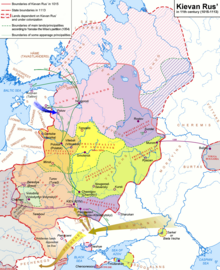Our website is made possible by displaying online advertisements to our visitors.
Please consider supporting us by disabling your ad blocker.
Chud

Chud or Chude (Old East Slavic: чудь, romanized: čudǐ, Finnish: tšuudi, Northern Sami: čuhti) is a term historically applied in the early East Slavic annals to several Baltic Finnic peoples in the area of what is now Estonia, Karelia[1] and Northwestern Russia.[2] It has also been used to refer to other Finno-Ugric peoples.[3][4]
- ^ Lind, John H. (2004). "The politico-religious landscape of medieval Karelia". Fennia. 182 (1). Helsinki: 3–11.
- ^ Ryabinin, E. A. (1987). "The Chud of the Vodskaya Pyatina in the light of new discoveries" (PDF). Fennoscandia Archeologica: 87–104.
- ^ Jääts, Indrek (2009). "The Komi, Ethnic Stereotypes, and Nationalities Policy in Late Imperial Russia". The Russian Review. 68 (2): 199–220. doi:10.1111/j.1467-9434.2009.00521.x. ISSN 0036-0341. JSTOR 20620990.
- ^ Eliot, Charles (1911). . Encyclopædia Britannica. Vol. 10 (11th ed.). pp. 388=393.
Previous Page Next Page


